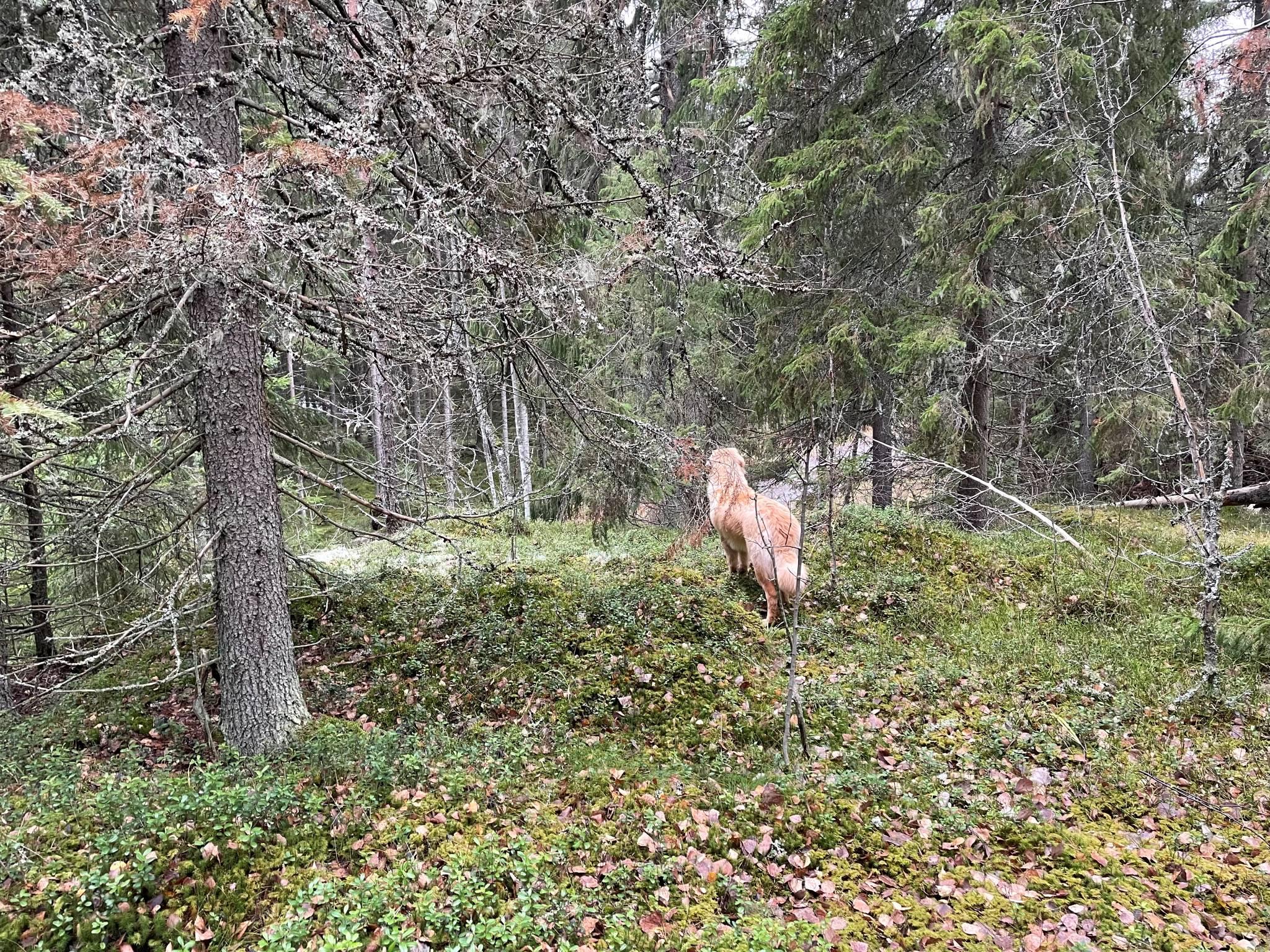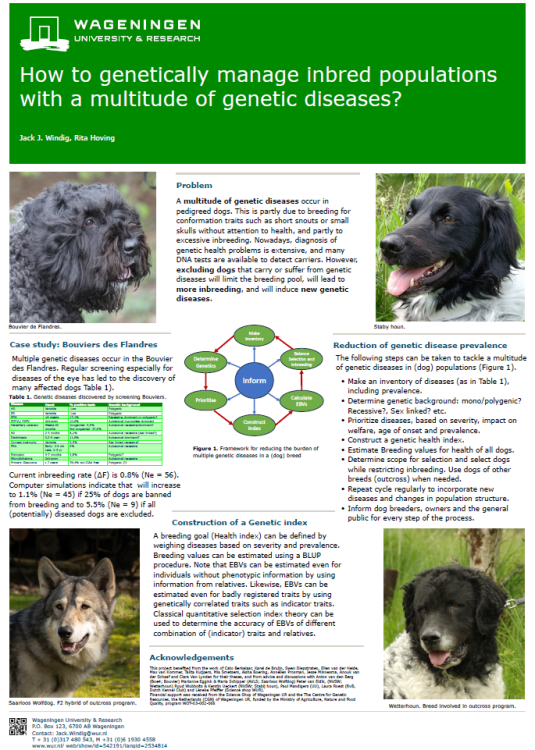How to breed healthy dogs - Projects and infographics from the Netherlands
Breeding for health in pedigreed dogs
Wageningen University in the Netherlands has completed an interesting project ‘Breeding for health in pedigreed dogs’. An excerpt from the project page:
The “Science shop” of Wageningen University has set up this project in response to questions from three breeding organisations, with the aim to provide knowledge on how to better breed for healthy dogs and use the latest insights from scientific developments. Next to dealing with health problems, genetic management to preserve genetic diversity and prevent high inbreeding rates is essential. A high inbreeding rate caused by using too few and too related dogs in breeding will harm the health of the dogs. Consequently, excluding too many dogs for health reasons will restrict the genetic pool and may cause a too high rate of inbreeding with subsequent health problems. A balance between breeding for health and restricting inbreeding must be found. This has led to the central question of this research: How to set up breeding for healthy pedigreed dogs? A healthy dog is the aim both of dog owners, breeding organisations and society in general. In this report 4 questions are treated:
- How to deal with a multitude of hereditary health problems in a breed?
- Can breeding value estimation help to reduce health problems in dogs and how to design it?
- What is the value of DNA genotyping for estimation of kinships and inbreeding and thereby improving the health of dogs?
- When and how to set up an outcross, and what does it contribute to the health of the dogs?
Tackling health problems is not easy, because the problems are complex and knowledge of genetics is often scarce. Although the task ahead is considerable, there are clear starting points. To manage inbreeding rates the use of mean kinships is most effective and recommended. Additional to that, this report provides specific recommendations on how to deal with the four subjects mentioned above.
The project has produced four publications:
- a full report on the project (in Dutch) by Rita Hoving and Jack Windig, downloadable from the project page (link below)
-
an e-book ‘Het fokken van rashonden - Omgaan met verwantschap en inteelt’ (Breeding of pedigree dogs: dealing with kinship and inbreeding) by Kor Oldenbroek and Jack Windig.
- The book was developed as part of the Kinship Project, which is an initiative of the IPFD partner Raad van Beheer, together with the Dutch Ministry of Economic Affairs, Agriculture and Innovation. The Kinship Project is part of the Raad van Beheer's sustainable breeding policy: Towards the healthy purebred dog.
- a paper in the proceedings of the 12th World Congress on Genetics Applied to Livestock Production (WCGALP) 2023 by Windig, Margarita and Doekes: Inbreeding and litter size in Dutch pedigreed dogs
- a poster at the 7th International Conference of Quantitative Genetics (2024) by Jack Windig and Rita Hoving: 'How to genetically manage inbred populations with a multitude of genetic diseases?’ A pdf of the poster can be downloaded from the project page at the link below.
Read more about the project here >>
Breeding wisely - Infographics on inbreeding
To facilitate all levels of the animal breeding sector, the Centre for Genetic resources, the Netherlands (CGN) at the Wageningen University & Research has developed three infographics to explain the concept of inbreeding, its consequences and how to deal with it. The infographics are aimed specifically at owners and breeding organisations.
The infographics have been translated into English in cooperation with the European Regional Focal Point for Animal Genetic Resources (ERFP) network. In 2024, in collaboration with the European Reference Centre for Endangered Animal Breeds (EURC-EAB), the infographics have been translated into French. Futher translations into other languages will follow.
You can read more and download the infographics here >>
 Donate
Donate


0 Comments
Recommended Comments
There are no comments to display.